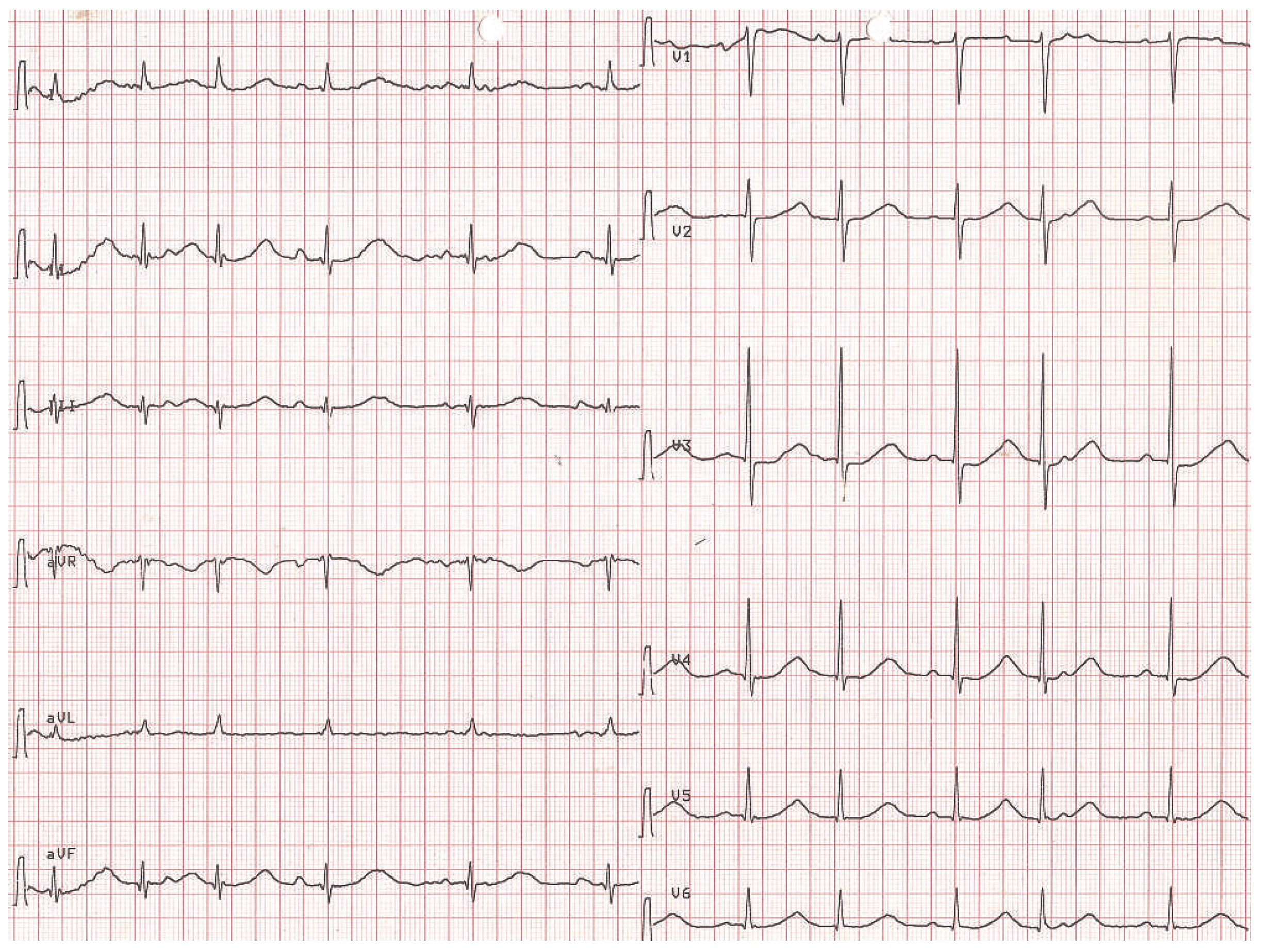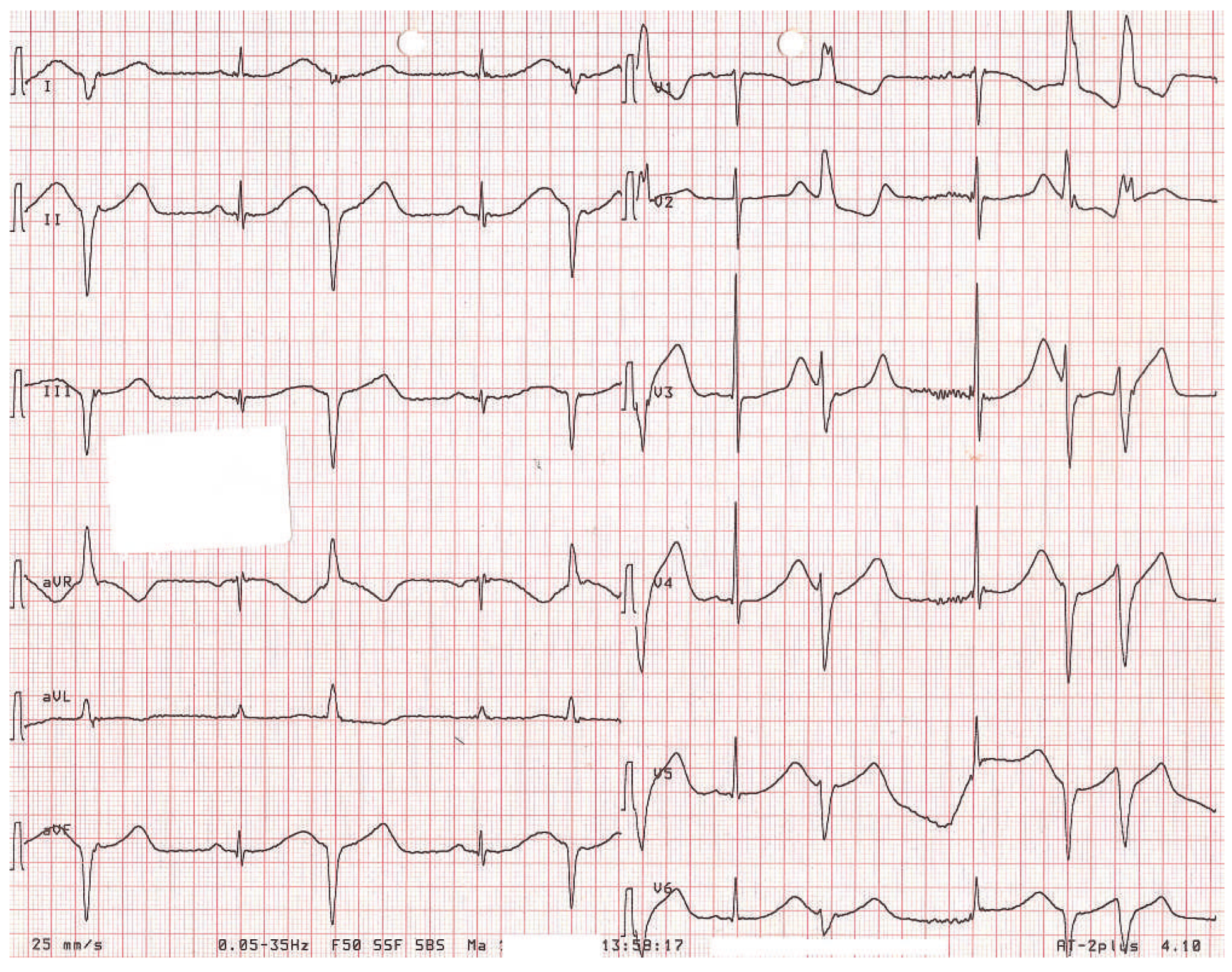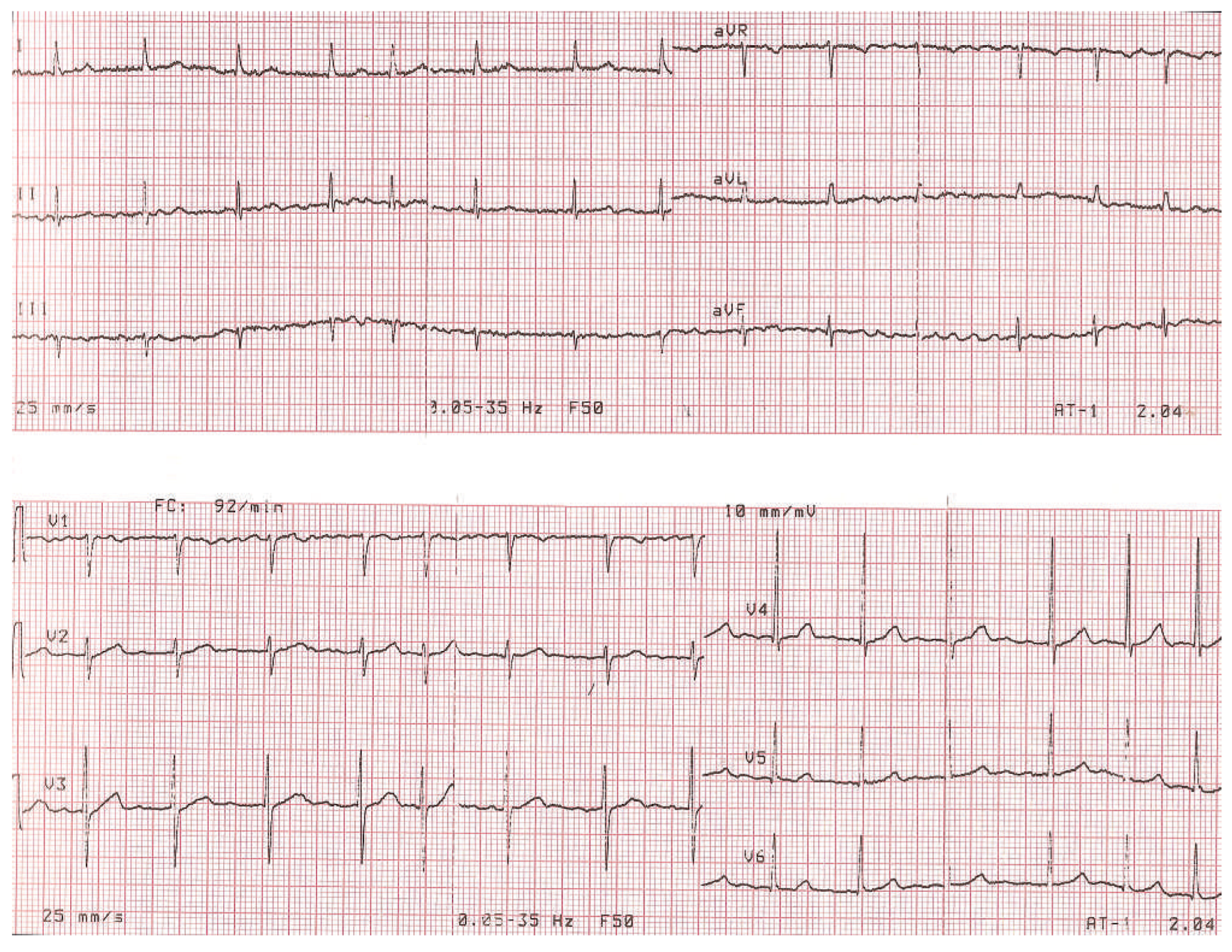An Elderly Patient Mentally Confused
Case presentation
Questions
- What is your diagnosis?
- What are the possible causes of this anomaly?
Commentary
Funding / potential competing interests
References
- McKibbin, J.K.; Pocock, W.A.; Barlow, J.B.; et al. Sotalol, hypokalemia, syncope and torsade de pointes. Br Heart J. 1984, 51, 157. [Google Scholar] [CrossRef] [PubMed]
- Makkar, R.R.; Fromm, B.S.; Steinmann, R.T.; et al. Female gender as a risk factor for torsades de pointes associated with cardiovascular drugs. JAMA 1993, 270, 2590. [Google Scholar] [CrossRef] [PubMed]
- Roden, D.M. Drug-induced prolongation of QT interval. N Engl J Med. 2004, 350, 1013. [Google Scholar] [CrossRef] [PubMed]



© 2013 by the author. Attribution - Non-Commercial - NoDerivatives 4.0.
Share and Cite
Claude, F.; Delabays, A. An Elderly Patient Mentally Confused. Cardiovasc. Med. 2013, 16, 134. https://doi.org/10.4414/cvm.2013.00125
Claude F, Delabays A. An Elderly Patient Mentally Confused. Cardiovascular Medicine. 2013; 16(4):134. https://doi.org/10.4414/cvm.2013.00125
Chicago/Turabian StyleClaude, Florian, and Alain Delabays. 2013. "An Elderly Patient Mentally Confused" Cardiovascular Medicine 16, no. 4: 134. https://doi.org/10.4414/cvm.2013.00125
APA StyleClaude, F., & Delabays, A. (2013). An Elderly Patient Mentally Confused. Cardiovascular Medicine, 16(4), 134. https://doi.org/10.4414/cvm.2013.00125



